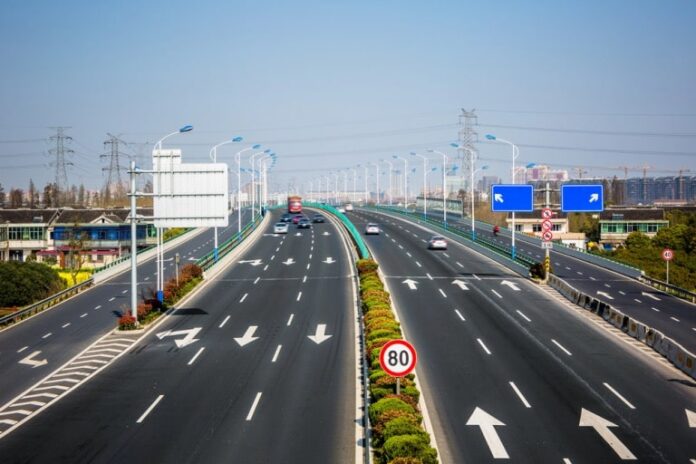The growing demand for infrastructure requires smarter, safer, and more efficient work zones. Traditional control traffic methods and work zone management have difficulty keeping pace with the challenges of high traffic volumes, strict project deadlines, and advanced safety requirements.
Using advanced technologies such as dynamic messaging, real-time traffic monitoring, and automated flagging, smart work zone systems offer a revolutionary response to the solution, further enhancing safety and agility.
These systems bridge the gap between work zones and road users and thus curtail congestion, avert accidents, and improve project delivery. Additionally, smart traffic control systems and data-driven decision-making tools are some of the major changes in the planning and implementation of modern infrastructure projects.
Thus, it is crucial to discuss the significance of smart work zone systems in modern construction projects and how they revolutionize road construction, maintenance, and transport safety. So keep reading!
Real-Time Adaptive Traffic Management
Smart work zone systems are a practical option due to their ability to adapt traffic management strategies in real time. That is why smart work zone systems for real-time updates are critical for modern infrastructure and traditional tolls like barricading and static signage.
Additionally, smart systems utilize live data from radar sensors, cameras, and GPS units, which help monitor traffic speed and flow. These systems use the data to dynamically modify the speed limit, lane closures, and diversion routes, paving the way for a smooth traffic flow.
Moreover, real-time adaptability reduces congestion and travel delays, ensuring drivers’ compliance. Furthermore, real-time responsiveness effectively addresses the issue of sudden congestion or vehicle breakdown events, thus averting more substantial traffic disturbances.
Moreover, combining smart work zone systems with traditional signage ensures real-time adaptability while maintaining consistent, clear guidance for safer, smoother traffic flow.
Hence, in a world of congestion, high efficiency in traffic control is necessary; in this case, smart work zone systems’ ability to adjust dynamically becomes a standout feature, offering smooth traffic flow, real-time updates, and, ultimately, smooth operations.
Enhanced Worker and Driver Safety Through Automation
Automated safety systems in smart work zones set them apart from traditional methods because standard practices require human intervention, significantly increasing the risk to workers and drivers.
Using automated flagging devices, the system remotely operates barriers and connects warning signals that minimize human exposure in hazardous areas. The radar-based speed detection and automatic alert system also encourage safe driving behavior.
As a result, construction sites experience minimal accidents. Moreover, such systems are equipped with fail-safe and redundant communication channels, which ensures flawless delivery of the alerts to the intended parties without fail.
Hence, with occupational health and road safety taking center stage, automation within smart work zone systems is a significant advancement compared to traditional system offerings.
Integration of Advanced Communication Technologies
Smart work zone systems integrate modern-day communication channels like wireless mesh networks, 4G/5G cellular connectivity, and even satellite communications in rural or remote construction sites.
These networks connect the various system components—dynamic message signs, sensors, and controllers—with seamless data flow and real-time synchronization.
In addition, some are designed to enable interaction with connected vehicles through dedicated short-range communications (DSRC) or Vehicle-to-Everything (V2X) protocols so they can directly deliver updates into the vehicle’s onboard system.
Therefore, data transfer, remote monitoring, and centralized control are initiated with minimal delay because of high-level connectivity. In modern infrastructure, where interconnectedness is a priority, smart work zone systems become paramount, adding efficacy and safety.
Predictive Analytics and Data-Driven Decision-Making
Smart work zone systems help improve traffic control as they entail real-time and historical data collected through the use of sensors, cameras, and GPS trackers.
As a result, the advanced software analyzes the data to spot patterns and predict traffic jams, accidents, or equipment failures, allowing traffic managers to act before problems grow helping to adjust speed limits, lane closures, and detours quickly.
Over time, smart zones build a deep pool of data that helps in planning better road projects, ultimately helping to cut down delays, save money, and thus improve worker safety.
Moreover, predictive tools help schedule repairs and manage resources more efficiently. Therefore, in today’s infrastructure projects, decisions based on real-time data are no longer optional—they are essential, and smart work zone systems make it easy to turn raw data into smarter, faster actions.
Scalability and Customization
The smart work zone technology provides scalable and personalized solutions that stand out from other systems. These systems adapt well to short roadwork activities and large highway development programs.
Additionally, they can modify sensor, signage, and control unit placement to align with the unique requirements of each project. Each system unit lets operators monitor various performance measurements, including vehicle speed enforcement and road utilization, with environment notifications.
Therefore, projects using smart technologies adapt better to shifting project sizes and specifications, all possible because of its highly customizable setups. Hence, smart work zone systems demonstrate cutting-edge technology that matches the variable requirements of infrastructure projects.
Bottomline
Smart work zone systems redefine how modern infrastructure projects are managed and executed. These systems address safety and efficiency challenges by combining real-time data collection, predictive analytics, adaptive traffic control, and flexible deployment.
Moreover, their ability to scale across projects of all sizes and customize to unique requirements makes them a valuable asset in today’s evolving infrastructure landscape.
In addition, as technology continues to advance, smart work zone systems will become even more integral to project planning and traffic management. Therefore, embracing these innovations is essential for building safer, smarter, and more responsive road networks in the future.


